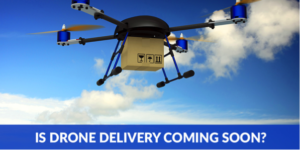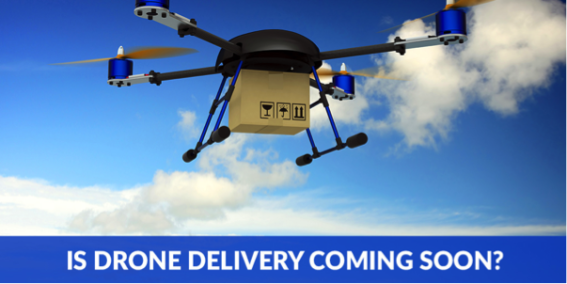
Widespread retail, consumer and investor interest in rapid package delivery has sprouted a competitive landscape of drone companies and technologies. Amazon CEO Jeff Bezos gave his first “Prime Air” teaser in 2013, predicting a 2017 or 2018 launch. The e-commerce giant successfully completed its first drone delivery in December 2016 and held its first public demonstration of a Prime Air drone delivery this past March.
UPS delivered its first residential package via drone in February, with the vehicle launching from a delivery truck and returning once its mission was completed. Both Amazon and UPS believe drone use will significantly reduce delivery costs.
The technology has yet to be perfected and faces many challenges. One such concern is the family dog who may interfere with drone delivery to residential homes. Recent reports indicate that Amazon is using a simulated canine to determine how drones would respond to a dog trying to protect its territory. A dog could possibly damage the drone or the package in an attack. Or the drone could injure the dog during a delivery attempt. Can a drone be programmed to dispense a treat to distract a ferocious dog?
Other challenges include drone flight range limitations, package weight and size restrictions, inclement weather and many more complicating factors yet to be discovered.
Even the USPS is paying attention. In 2016, the USPS analyzed how consumers viewed drone delivery benefits and drawbacks in a national survey. They found that more Americans like the concept of drone delivery than dislike it, but many are undecided. The public was most interested in using drones to enable one-hour deliveries or deliveries in emergency situations, but were concerned that drones might damage the package they were carrying or injure someone.
In its summary of the research, the USPS Office of Inspector General emphasized that it will take a few years for the technology to mature and regulations to be finalized. The Federal Aviation Administration has many regulations concerning commercial drone deliveries, including the requirement that the devices be operated remotely by a human pilot. And while drone technology is constantly improving, current prototypes powerful enough to make long-distance flights are too expensive, while more affordable ones are too weak.
Other countries are moving more aggressively to allow drone delivery. Amazon has chosen to test the use of drones in countries where the regulators have been less restrictive, including the U.K. and the Netherlands. A Chinese company, JD.com, is flying drones on fixed routes to deliverymen in rural Jiangsu province, and Domino’s has delivered pizzas by drone in New Zealand.
So is widespread drone delivery coming soon to the U.S.? That depends on your definition of “soon” – but according to last year’s USPS survey, most Americans think drone delivery will be available in the next 3 to 5 years. We will continue to monitor this innovative new delivery system and its potential impact on our industry.
MailSmart Logistics provides worry-free shipping at remarkably-low postal rates –
You’re going to love working with MailSmart Logistics!





